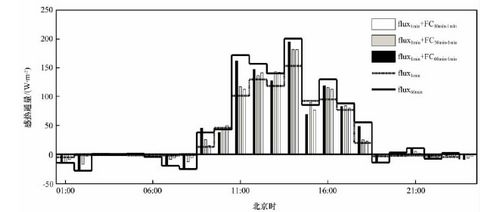Influence of the Different Averaging Period on Computing the Turbulent Fluxes Using LOPEX10 Data
Updatetime:2013-07-02From:
【Enlarge】【Reduce】
The latent heat and sensible heat exchange between land surface and atmosphere can be obtained by processing the eddy covariance system observation data. However, the averaging period has essential influence on computing turbulent flux. The datasets collected from the LOess Plateau mesa region land surface process field EXperiment series (LOPEXs) have been analyzed to assess this influence. A formula named Flux Compensation (FC) has been derived for calculating the flux difference among the specified averaging periods. It shows that this formula could be applied to compensate flux loss due to shorter averaging periods and analyze the contribution from low-frequency eddies with a correlation coefficient around 0.95 compared to that directly calculated from the eddy covariance system observation data. After carefully calculations and analyses, it is concluded that the optimum averaging period for LOPEXs proved to be 30 min, and FC could also be applied to any other in-site data. It is the low-frequency eddies that cause the difference in flux with the different averaging periods. FC could be a technique in identifying optimum averaging periods and compensates the flux consumed by low-frequency eddies while keeping its high temporal resolution.

Comparison of the fluxes computed with averaging temporal period at different time(black bar) and the fluxes after the corrected FCt2-t1 formula (gray bar) during 11:00-15:00 on 11 September 2010.(a) sensible heat flux,(b) momentum flux,(c) CO2 flux,(d) latent heat flux

DIurnal change of the turbulent flux calculated from the different averaged time on 11 September 2010
Download from the attachment




